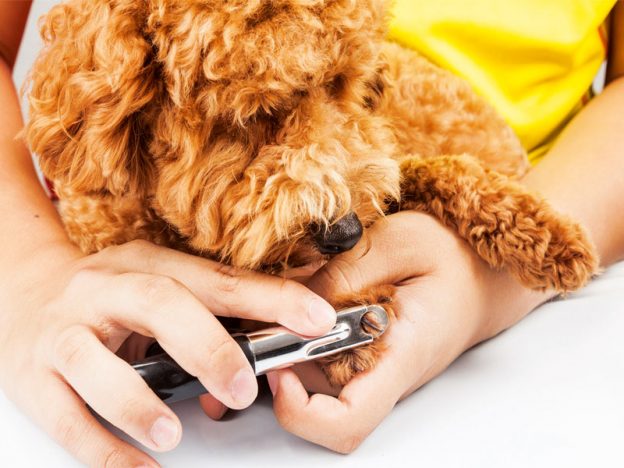
Is dog nail trimming purely vanity or is it important for their health? Danielle Chenery explores the ins and outs of doggy manicures
Do you really need to ensure your dog’s nails are kept trim? The short answer is yes — especially if your pampered pooch is used to carpets and couches rather than hard floors. Dr Eloise Bright from Love That Pet advises trimming your dog’s dewclaws every six weeks.
“Dogs do not always need all their nails trimmed if they are going on frequent walks on the footpath, but those ‘thumb’ nails don’t touch the ground so are not worn down by exercise. These will definitely need regular trimming,” she says.
Health risks
Not only do lopsided nails sound uncomfortable and bad for your floors, but having uneven nails is not good for your dog’s health. “If they are quite long, they can cause your dog’s toes to splay out to the side and put strain on the joints in the foot,” Dr Eloise explains. A spokesperson from the Animal Welfare League Qld (AWLQ) adds that if a dog’s nails are not properly maintained, they can become ingrown or infected. Frequency of nail trimming depends on the size of the dog, with little dogs needing a trim more often, around once a month. “It’s important to make it not only an enjoyable experience but part of the handling process from as early an age as possible. So it’s ideal to sit down with your puppy and even use a nail file on him to ensure that he becomes accustomed to his feet being handled in this way,” the spokesperson says.
Dr Karen Davies from Direct Vet Services agrees. “Owners should handle the pet’s feet from a young age to get them used to the whole process so that whenever it needs to be done, it is not too traumatic.” The vet often sees dogs with ingrown and torn nails through lack of maintenance. “Overgrown nails can grow into the pad of the foot or the side of the leg in the case of dewclaws,” she says.
Age is another factor. “As animals age, they tend, like us, to ‘sink in the feet’, as tendons elongate with age and toes become arthritic. This can lead to flat feet and less wear and tear on the nails. Reduced activity with arthritis will have the same effect,” Dr Karen says. Improper nail maintenance also makes it easier for dogs to accidentally injure themselves. “Overlong nails are more likely to get caught in carpets or torn accidentally,” Dr Eloise says. Dr Karen adds, “Split or broken nails can be very painful and trimming to avoid overgrowth will minimise this. Overgrown nails growing into the pads should also be avoided with regular trimming.”
Aside from injuries caused by overgrown nails, your pooch’s hooves can also provide some clues into her overall health. “Dry and flaky nails can be a sign of a poor diet,” Dr Eloise says. “Licking or chewing around the nails can be a sign of allergies.”
The experts also advise to look out for infections around the nail, changes in colour, swelling and tenderness or favouring of a particular foot as a snapshot of your dog’s health.
Calling in the Professionals
Getting a professional to cut your dog’s nails for the first time is also recommended. “The first time you trim your dog’s nails, it can be a good idea to get a groomer, nurse or vet to show you how,” Dr Eloise advises. “If you cut a dog’s nail too short, it hurts and bleeds just like with our nails. Your dog will most likely not be keen to repeat the experience, so you will need to work with treats and gentle handling around the feet to build up a positive association before you attempt again.”
Make sure your furry friend is always looked after at our DOGSLife Directory



